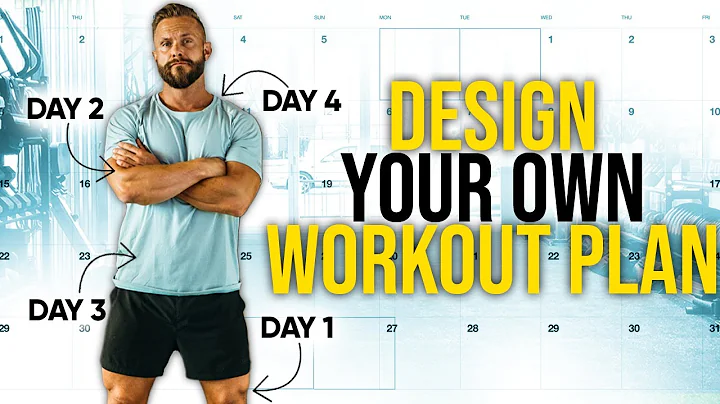Automate WhatsApp Messages with Google Sheets
Table of Contents:
- Introduction
- Setting up Google Sheets
- Creating the message template
- Formatting the message
- Adding dynamic content
- Creating the send message option
- Testing the WhatsApp message
- Sending payment reminders
- Customizing the message
- Conclusion
How to Send WhatsApp Messages from Google Sheets
In this tutorial, we will learn how to send WhatsApp messages directly from a Google Sheets spreadsheet. The method we are going to use is completely free, and there is no need for any third-party tools. By following the steps outlined below, you will be able to create a button that sends WhatsApp messages based on the content of your Google Sheets. This can be particularly useful for sending discount sale notifications, payment reminders, or any other type of personalized message to your customers.
1. Introduction
WhatsApp is a widely used messaging platform that allows users to communicate with each other. By integrating WhatsApp with Google Sheets, you can automate the process of sending messages by simply updating the spreadsheet with the desired content.
2. Setting up Google Sheets
The first step is to create a Google Sheets document and design it according to your needs. You can add columns for the recipient's name, phone number, and the message content. Make sure to include the necessary headers for each column.
3. Creating the message template
To create the message template, you can use formulas in Google Sheets to dynamically populate the message content based on the recipient's name and any other relevant information. By using formulas like CONCATENATE or AMPERSAND, you can combine text and data from different cells to create a personalized message for each recipient.
4. Formatting the message
Formatting the message is important to make it visually appealing and easy to read. You can use special ASCII characters or symbols to add emphasis or create sections within the message. For example, you can use asterisks (*) to make certain parts of the message bold.
5. Adding dynamic content
To further customize the message, you can add dynamic content such as payment amounts or due dates. By referencing the appropriate cells in your Google Sheets and using formulas, you can ensure that the message includes up-to-date information for each recipient.
6. Creating the send message option
To enable the sending of WhatsApp messages, you can create a hyperlink in Google Sheets that triggers the sending of the message. By using the appropriate WhatsApp URL scheme and referencing the recipient's phone number and the message content, you can generate a clickable link that opens WhatsApp with the pre-filled message.
7. Testing the WhatsApp message
Before sending the WhatsApp messages to your customers, it is important to test the functionality to ensure everything is working as expected. You can start by clicking on the link created in the previous step and verifying that it opens WhatsApp with the correct message.
8. Sending payment reminders
In addition to discount sale notifications, you can also use this method to send payment reminders to your customers. By adding an additional column for the amount due and incorporating it into the message template, you can automatically send personalized payment reminders with the current outstanding balance.
9. Customizing the message
Feel free to customize the message template and formatting according to your specific needs. You can add additional columns for different types of messages or include different variables based on your business requirements.
10. Conclusion
By utilizing Google Sheets and WhatsApp integration, you can streamline and automate the process of sending messages to your customers. This method not only saves time but also allows for personalized and targeted communication. Experiment with different formatting options and data sources to optimize your messaging strategy and enhance customer engagement.
Highlights:
- Learn how to send WhatsApp messages from a Google Sheets spreadsheet
- Automate the process of sending personalized messages to your customers
- Use formulas and formatting to create dynamic and visually appealing messages
- Test the functionality before sending messages to ensure accuracy
- Customize the messages to suit your specific business needs
FAQ:
Q: Can I use this method to send WhatsApp messages to multiple recipients at once?
A: Yes, you can send messages to multiple recipients at once by simply updating the relevant columns in your Google Sheets with the desired content. The method outlined in this tutorial supports bulk messaging.
Q: Are there any limitations to the number of messages I can send using this method?
A: The number of messages you can send using this method is subject to the limitations imposed by WhatsApp. It is recommended to review and comply with WhatsApp's terms of service and guidelines to avoid any potential restrictions.
Q: Can I schedule WhatsApp messages to be sent at specific times?
A: This tutorial focuses on the process of manually sending WhatsApp messages from Google Sheets. However, you can explore other automation options within Google Sheets or third-party tools to schedule the sending of messages at specific times.
Q: Is it possible to track the delivery status of the WhatsApp messages sent using this method?
A: The delivery status of WhatsApp messages sent using this method may not be directly accessible within the Google Sheets interface. However, WhatsApp provides features and APIs for businesses to track message delivery and engagement.
 WHY YOU SHOULD CHOOSE SaasVideoReviews
WHY YOU SHOULD CHOOSE SaasVideoReviews







